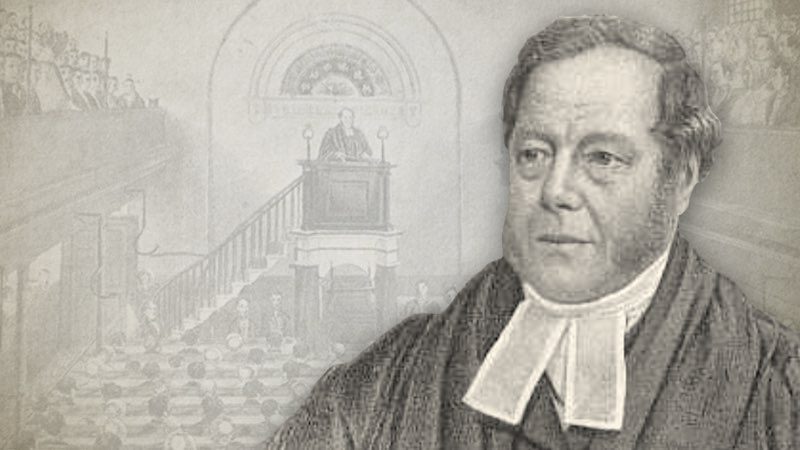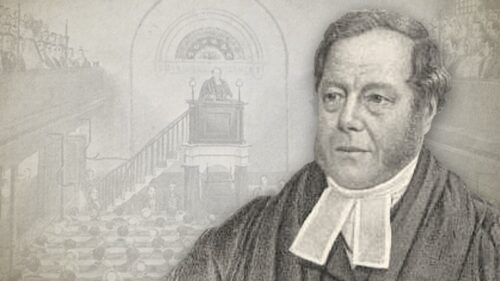-
Book 3: The Argument, The Mode Of Obtaining The Grace Of Christ. The Benefits It Confers, And The Effects Resulting From It
The two former Books treated of God the Creator and Redeemer. This Book, which contains a full exposition of the Third Part of the Apostles’ Creed, treats of the mode of procuring the grace of Christ, the benefits which we derive and the effects which follow from it, or of the operations of the Holy Spirit in regard to our salvation. The subject is comprehended under seven principal heads, which almost all point to the same end, namely, the doctrine of faith. I. As it is by the secret and special operation of the Holy Spirit that we enjoy Christ and all his benefits, the First Chapter treats of this operation, which is the foundation of faith, new life, and all holy exercises. II. Faith…
-
Letter 6: To Zadok—On Justification
I know not a question of greater moment to a trembling sinner, than that which the Holy Spirit directed Job to propose, “how shall man be just with God?” And as I am persuaded of your solicitude to decide this question for yourself I write this epistle, with the hope of affording you a little assistance. In order to place the subject in a clear light it is necessary to premise, that the state of mankind is a state of condemnation— that human nature has sunk into total ruin and depravity— and that “sin has entered into the world, and death by sin, so that death hath passed upon all men:” these are facts which I trust you have not only admitted as important articles…
-
Letter 5: To Zebah—On Atonement
The subject on which I am about to offer you a few remarks, has been dear to the heart of every Christian in all ages; it is the glory of the gospel scheme, and shall constitute our song in the realms of bliss; it is therefore desirable, that your mind should be well informed upon it, and deeply affected with it. Throughout the mosaic economy, the doctrine of atonement was set forth in lively colours by the bleeding victims on the Jewish altar. Prophets spake of it in the most unequivocal terms, and apostles asserted it as the fundamental article of Christianity; yea, the exclamation of John, “behold the Lamb of God, which taketh away the sin of the world,” was but the echo of…
-
Letter 4: To Berith—On The Covenant Of Grace
My dear Berith, The conspicuous change which has been effected in you, by the grace of God, affords me peculiar satisfaction, and begets in my mind, an anxiety for the increase and permanency of those pleasures of which you have already tasted; and with this object in view, allow me to lead your attention to the inexhaustible treasure, whence all spiritual blessings are derived; even the COVENANT OF GRACE. “Be ye always mindful of his covenant” is the express command of Jehovah to his people, by his servant David; and if my dear young friend were fully aware of the advantage arising from habitual appropriation of the covenant plentitude, and holy communion with the covenant head, the constant cry of his heart would be “Lord…
-
Letter 3: To Ibhar—On Election
My dear Ibhar, The important subject upon which I addressed your brother Elimelech, involves the topic on which I shall write to you, praying, that the Holy Ghost may render it as consoling and profitable to you as he has to me. The election of grace must necessarily follow upon the admission of the absolute sovereignty of God: but as this doctrine has always been, and still is, so offensive to those who have only a name to live, but are spiritually dead; and as your comfort and peace so much depend on your “knowing your election of God,” I will endeavour to present you with a concise view of it, and to assist you in coming to some decision concerning it. That the Lord…
-
Letter 2: To Elimelech—On Divine Sovereignty
My dear Elimelech, A clear apprehension of the sovereignty of God, and an habitual submission to it, will lay a firm foundation for your peace of mind, and afford you satisfactory solutions of the most mysterious things. I am aware that an aversion to this important doctrine is deeply rooted in our nature, and the very essence of the first transgression was a quarrel with Jehovah’s sovereignty; “ye shall be as Gods,” was the bait with which the tempter ruined mankind. This disposition to usurp Jehovah’s prerogative, discovers itself in every direction, and produces much of the distress, confusion, and guilt, which disgrace human nature, and agitate the whole creation of God: errors, doctrinal and practical, may be traced to this source, and even the…




